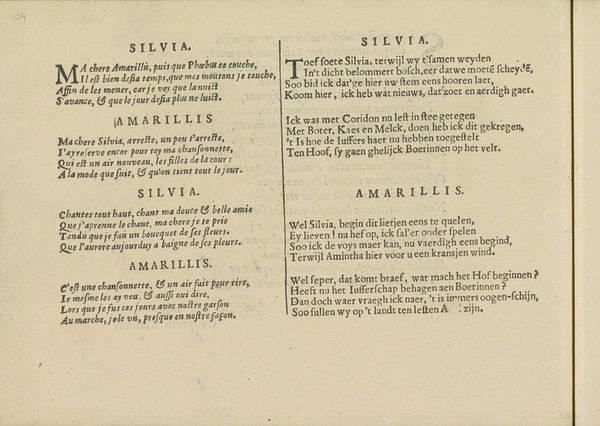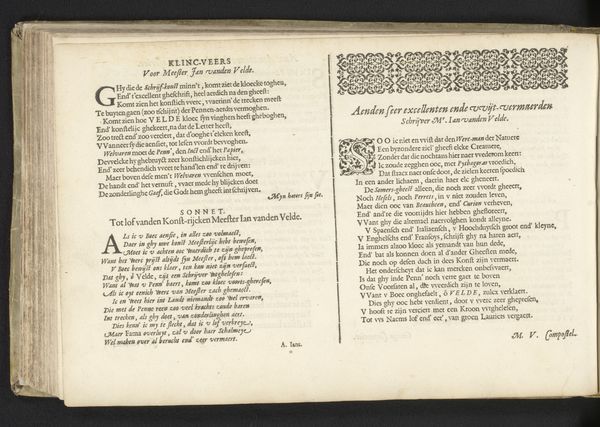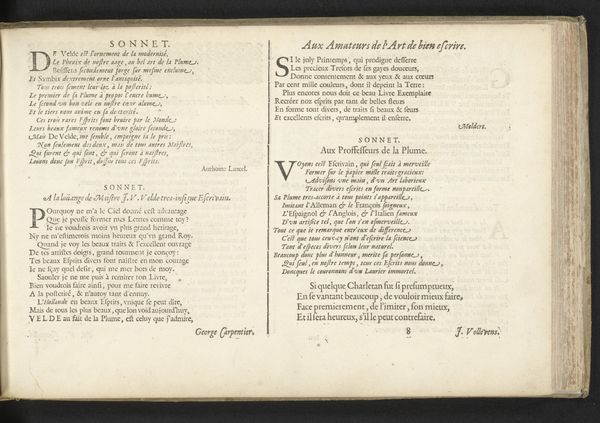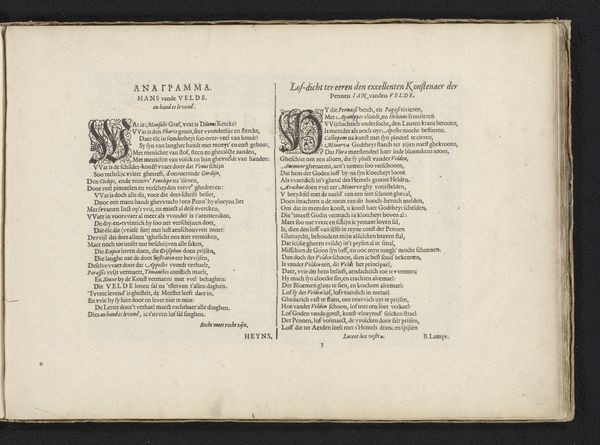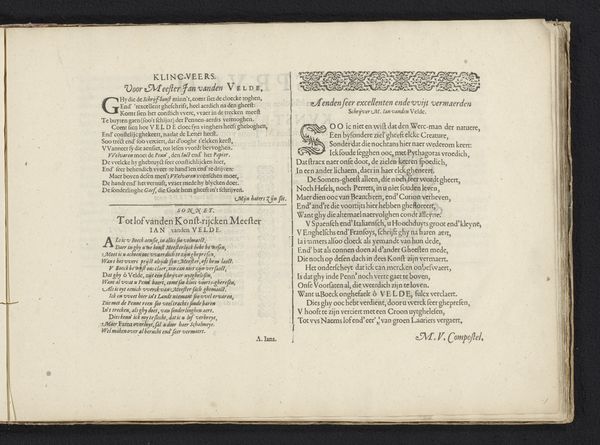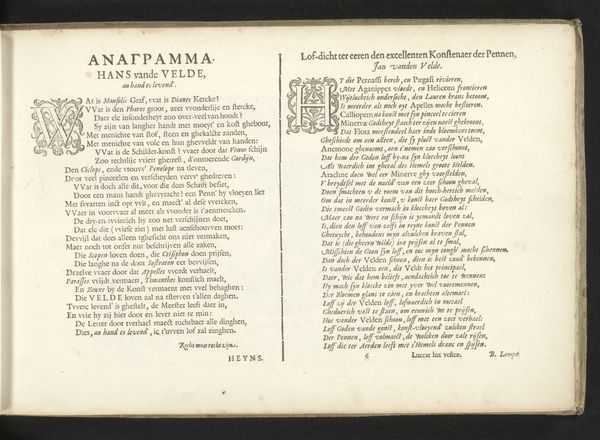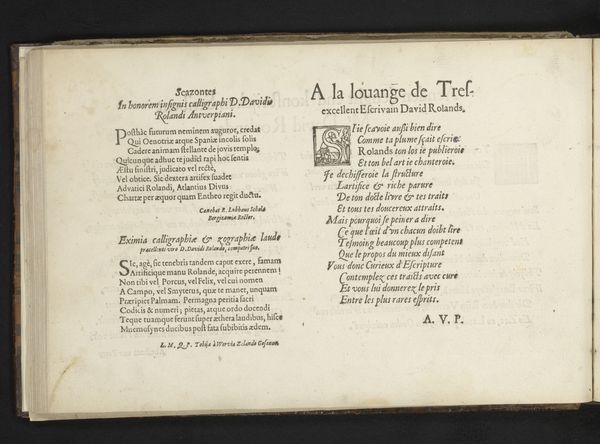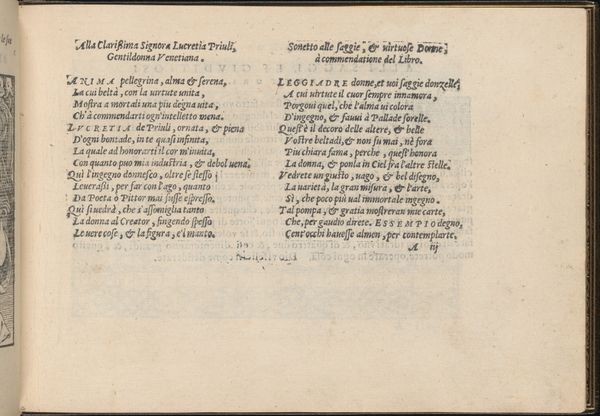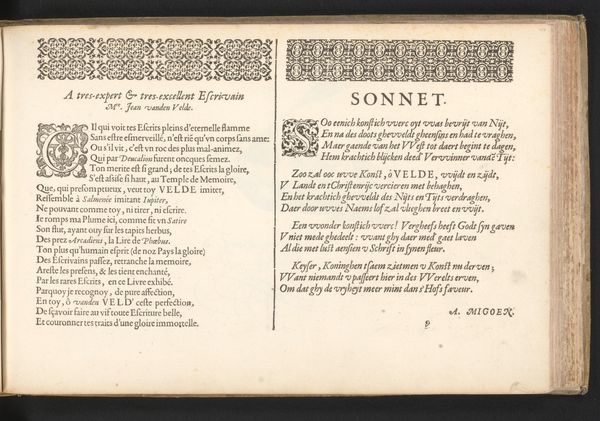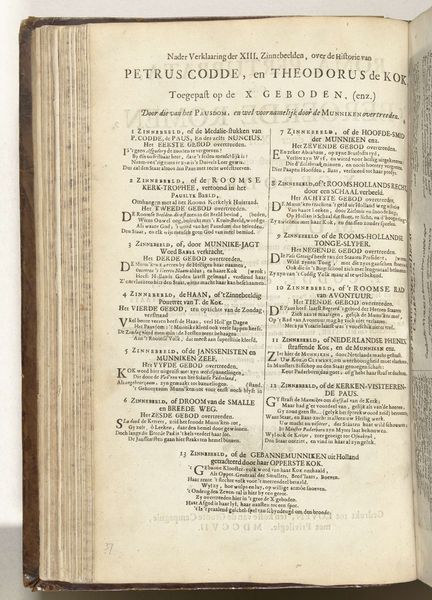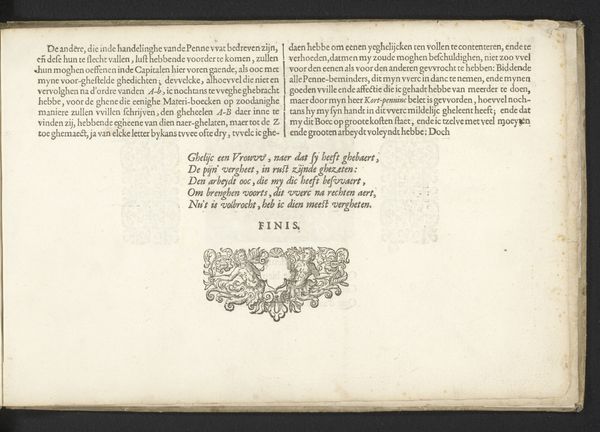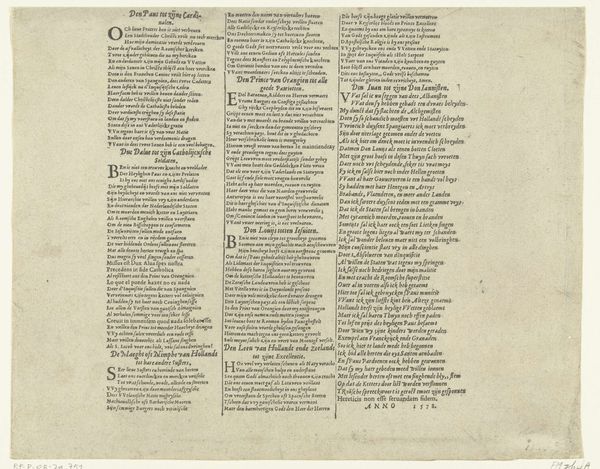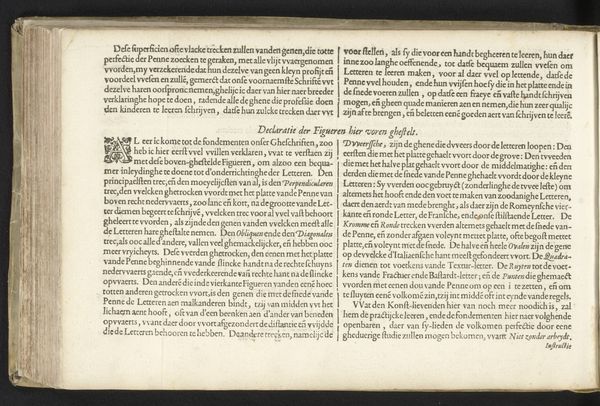
print, textile, engraving
# print
#
textile
#
engraving
Dimensions: height 210 mm, width 315 mm
Copyright: Rijks Museum: Open Domain
These pages from Hendrik Cranenburgh’s ‘Drie drempeldichten,’ are an example of early modern printing. The paper provides the substrate, of course, but the key materials here are ink and movable type. Consider how each letter was individually cast in metal, and then carefully arranged to form words and sentences. These were likely made from a lead alloy, which allowed for the fine details needed for legible text. The arrangement of these individual pieces of type required tremendous skill and an eye for visual harmony, a demanding, painstaking form of labor. Once assembled, the type would have been inked and pressed onto the paper, leaving a reversed impression. The regularity and uniformity of the type speak to the rise of standardization and mass production in the early modern period, and the social importance of the printing press. This was how texts could be disseminated to a broad audience, at the expense of the individual scribe’s labor.
Comments
No comments
Be the first to comment and join the conversation on the ultimate creative platform.
